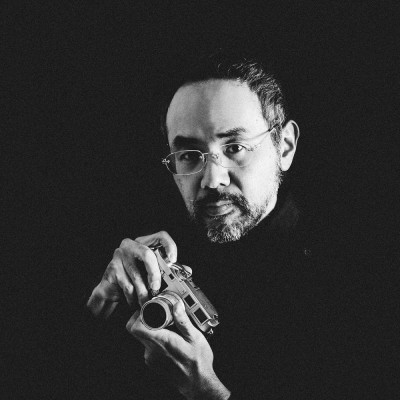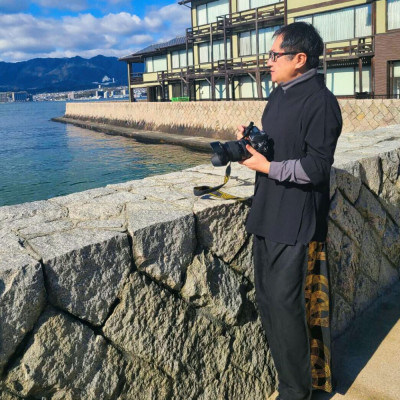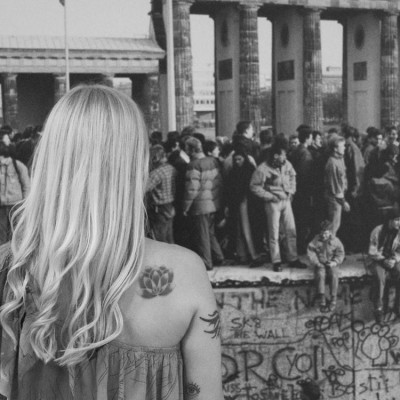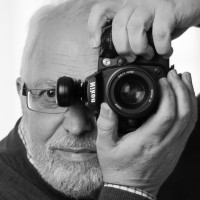SEARCH






|
|
|
|


By Editor Miro Susta
Edited and published by Yvette Depaepe, the 30st of August 2024
'Orange tube' by fotomarion
Vanishing Point Perspective is a simple but very effective method of creating a three-dimensional image impression on a two-dimensional surface, in another words Vanishing Point is a location where two parallel lines appear to intersect as they move apart, it’s a point on the horizon line where parallel lines appear to meet, producing the optical illusion of depth.
'At the front' by Andreas Agazzi
Vanishing Point Perspective may also be referred to as the "Direction Point Perspective", as lines having the same directional vector.
'Open air tunnel' by Taufik Ammouneh Martínez
Perspective is an essential element in the creation of impressive photos with a depth effect; it is a creative method in the artistic and technical field for depicting three-dimensional structures on the picture plane.
n/t by Wolfgang Mothes
For the viewer, perspective results in a certain distance relationship between the objects.
An important form of perspective on the picture plane is the Vanishing Point Perspective, which should be part of every photographer's basic knowledge.
'Path to infinity' by Miro Susta
'Inner peace' by Rana Jabeen
'Bellustar Tokyo' by Yutaka Kurahashi
In the Vanishing Point perspective, all vanishing lines of the image, which run parallel in the real situation, converge in one or more Vanishing Points, which can also lie outside the image.
'Commerzbank' by Hans Günther
In the most basic version of perspective, there is a single Vanishing Point on the horizon. Typically, it represents any linear element, such as roads, railway tracks, water canals, corridors, airport runways and similar.
'Flanders' canals are charged with magic' by Yvette Depaepe
'Driving west coast' by Leif Løndal
'The long road' by Rostovskiy Anton
'Countryside' by Piotr Krol (Bax)
If there is only one Vanishing Point in a single image, this is also referred to as central perspective. The viewer is positioned exactly in the centre of the image and all the lines defining the image converge at one point at the viewer's eye level.
'Arches' by Rana Jabeen
Photographs taken from the centre projection show the greatest symmetry, but in the photographic world it is often relatively difficult to capture an exactly symmetrical photo.
'no waiting for check-in' by Urs Zimmerman
'Reflections of motion' by Constantin Ticu
The perspective with two Vanishing Points is also referred to as a two-point perspective that is created when the photographer stands at an almost acute angle to the subject.
'Tranquility' by George Digalakis
When photographing a building from the outside, it is recommendable to use a perspective view with two Vanishing Points.
'Budapest' by Wael Onsy
Two-point perspective, if used well, gives photographs a unique and monumental look.
'Colorful shop banners' by Greetje van Son
For example, if a photographer stands in front of photographed object, in following picture the small old house, but looks at it a little bit from the side at its corners, he can see both horizontal edges of the house as a view, which meet at two imaginative Vanishing Points on the horizon line.
'Matching to the mountain' by Þorsteinn H. Ingibergsson
Three and multi-point perspective is most commonly used in photography because, as the name suggests, it comprises three or more Vanishing Points.
This perspective can be created by pointing the camera or the view not only horizontally, but also upwards or downwards, resulting in shots from a frog or bird's eye view.
'Red Tip' by Carmine Chiriacò
In this perspective vertical lines merge into one Vanishing Point, while the horizontal lines have two or more Vanishing Points.
The three-point perspective makes it possible to photograph objects with extreme angles or vertical orientations, such as tall buildings or deep gorges.
The use of this advanced technique gives the picture a dramatic element that conveys a sense of height or even great depth.
'City Hall' by Wolgang Mothes
In reality, there are many objects whose edges run parallel to each other. Some examples of this are aerial views of cities, looking down on a skyline bristling with skyscrapers.
For many photographers, the three- or more point perspective is just as useful in aerial photography where the view objects can be just as steep as it is in landscape photography with views of towering buildings, cliffs or deep ravines and canyons.
'Free Fall' by Rana Jabeen
When an image is showing several objects, these do not necessarily need to have the same Vanishing Points. The Vanishing Points in the image will only be identical if the edges of all of the objects are parallel to each other.
'JBR Dubai' by Carmine Chiriacó
If the viewer wants to see the scene from a bird's-eye view, the horizon line is placed in the upper third of the picture and on the other side, if the perspective of the frog is to be shown, the horizon line is placed in the lower third of the picture.
'Fate' by Jorge Pimenta
Finally, it may be said that the Vanishing Point perspective, as it corresponds to our sensorial perception, in most cases appears entirely natural.
· Calm, clear and symmetrical images are created primarily with the central perspective with only one Vanishing Point.
'Wartenau' by Steph Di-T
· To create tension with central perspective with just one Vanishing Point, the photographer can change position and place him/herself below or above the subject, but with the camera in a horizontal position.
'Infinity' by Rana Jabeen
· The two-point perspective creates a greater sense of space than the central perspective and is particularly popular in architecture to capture the depth of buildings and rooms.
'Louvre1' by Adamo Prieto
· Excitement, drama, and variety are created in photography primarily through three-point perspective, when things are viewed from a different, unusual perspective, e.g. from a bird's or frog's eye view, to visualise and illustrate them vividly.
Untitled by Semir Catovic
· There is also four Vanishing Point perspective, which can create stunning visual effects. This technique can stretch or distort objects, creating a surreal and captivating element to the photo that pushes it beyond the boundaries of reality.
'building' by lihailin
· When adding Vanishing Points, we remove aspects of perspective that we can consider to be natural. In central perspective, the relationships between the Vanishing Point and the horizon line to the line of sight are taken as given.
With three-point perspective, both the positions of the Vanishing Points and the relationship between the line of sight and the horizon line must be fixed.
'Stacked Houses' by Rana Jabeen
This is my second article on this subject, if you are interested to see the previous one, click HERE.
 | Write |
 | Steph Di-T PRO What an honor to be recognized as one example in your article, Miro! I truly enjoyed your words of wisdom together with some truly amazing photos, that support your input in the best possible way. |
 | Miro Susta CREW Please accept my sincere thanks for your nice words of encouragement dear Steph. |
 | Jorge Ribeiro Lume PRO Thank you ! |
 | Miro Susta CREW You are most welcome Jorge. |
 | Eiji Yamamoto PRO Thank you so much for the very inspiring article with great photos! |
 | Miro Susta CREW Many thanks for your appreciation dear Eiji. |
 | 大山 儀高 PRO The content and images are all helpful. Thank you for publishing this information. |
 | Miro Susta CREW Glad to see that you like it, thanks very much for nice comment. |
 | Roswitha Schleicher-Schwarz PRO Excellent choice and examples of vanishing point photography. Congratulations to all involved. |
 | Miro Susta CREW Thank you very much for your nice words of appreciation dear Roswitha |
 | Gabriela Pantu PRO Wonderful article and amazing selection of pictures, dear Miro and dear Yvette!Thank you for your effort and congratulations!<3 |
 | Miro Susta CREW Many thanks for your nice words dear Gabriela, we are glad to see that you like it. |
 | Andreas Agazzi PRO Very pleased to be together with all these beautiful photographs. I truly feel honored and would like to express my appreciation to Miro and the team that made this possible! |
 | Miro Susta CREW Many thanks for your nice words of appreciation dear Andreas |
 | Fernando Coelho CREW Wonderful read. Learned a lot…! |
 | Miro Susta CREW Thank you Fernando |
 | Eduardo Blanco García PRO Excellent.Thank you Yvette and Miro
2 hours agoReply
|
 | Miro Susta CREW Thank you very much Eduardo |
 | Rana Jabeen PRO Excellent article explaining vanishing points Miro..thank you so much for selecting my photos, it's an honour. Thank you Yvette and Miro |
 | Miro Susta CREW Many thanks dear Rana |
 | Greetje van Son PRO With much plesue I read your artickle about vanisching points Miro. It's very interesting and you use strong examples. Thank you for adding one of my pics for this interview. Thanks for charing and thanks to Yvette for publisching. |
 | Miro Susta CREW
we appreciate your wonderful comment very much dear Greetje, thank you. |
 | Carmine Chiriacò CREW Very interesting article Miro, all wonderful photos. Thank you for choosing my photos, it is always a great honour for me. Thank you dear Yvette and Miro.
|
 | Miro Susta CREW Thank you very much for your nice appreciation dear Carmine. |